
Beer for breakfast? What was once a fun jest, now becomes reality — and we're not talking Funky Buddah's Maple Bacon Coffee Porter either — as beer jellies fill a growing market niche.
"There are all kinds of ways to use beer jelly besides spreading it on toast in the morning," says Walter Warner, Co-founder (with wife Nancy) of Vermont-based Potlicker Kitchen, maker of a growing lineup of jellies made from beer. "That is probably one of the things (jelly users) will be the least likely to do."
With a range of flavors, including Oatmeal Stout, Apricot Ale and Blood Orange IPA, the options for using these beer-based condiments are endless — from barbecue glazes to gooey sauces to pancake toppings. Yet despite the obvious yumminess and practicality of these jellies, the idea to create jelly from beer came to Walter and Nancy almost by accident — or maybe more out of desperation. In 2010 these former archeologists bought a old one-room schoolhouse in Bethel, Vermont with a giant blackberry patch out back.
Nancy, who was already interested in food preservation through her archeological studies, took up canning as a "hobby" (read: obsession), starting with locally purchased strawberries, and later the blackberries, before moving on to other fruits seasonally available at local farmers markets. Once winter set in, the fruit ran out and Nancy began looking for other foods — like coffee or wine — to turn into jelly.
"We never run out of wine and we never run out of beer," Warner explains. "Nancy had a wine jelly recipe, but she thought, 'If I can make jelly out of wine, I can make jelly out of beer.'"
Nancy worked though a variety of formulas, all adapted from available wine jelly recipes. There was a lengthy period of trial and error with "a lot of long nights and wasted beer," Warner says, before the perfect recipe came into being.
"She came up with something that actually worked," he says, not sounding too surprised by his wife's determination. "It took a couple weeks to get
it right."
By late 2012 Nancy was, with Walter's encouragement, setting up at Saturday farmers markets and based on the initial interest and strong sales — plus the fact the pair were "working around the clock" to keep up with growing demand — she knew beer jelly was a hot product.
"That's how it started," Warner adds simply.
Truly Homebrewed
Nancy and Walter's earliest jelly creations were made with homebrew, and more specifically, the leftover beer found at the bottom of the carboy during bottling. Nancy used whatever a homebrewer-friend could provide, starting with vanilla porter and a brown ale.
As Potlicker's beer jelly began gaining popularity, their homebrewing friend couldn't keep up with their demand and the pair had little choice but to make the switch to making jelly with commercially produced craft beer, including Wolaver's Oatmeal Stout, Otter Creek Black IPA and Long Trail Ale, as well as other regional Vermont brews.
"We made it in the kitchen of the school house and were working almost around the clock at the end of 2012," Warner recalls. "It moved along from homebrew to commercially available beers because we could always get those. That way we weren't restricted to waiting for homebrew."
This created some new challenges (which we'll discuss later in the story), but it didn't take long to discover the simple truth that using better beer makes better beer jelly. IPAs, pale ales — beers with strong floral hop characteristics, as well as beers with maltier profiles work best. Flavorful brews such as Magic Hat #9 and Northshire Sicilian Blood Orange IPA worked a lot better for Potlicker than other average commercial offerings.
"It's beer, it's sugar and it's pectin, (so) your run of the mill beer doesn't make good jelly. Your Budweisers and Coronas, and even Guinness, are not going to make a tasty jelly. That's just beer-flavored jelly," Warner says. "The (beers with) more flavor really come through and make better jelly."
Some of the beers used at Potlicker Kitchen, including seasonal offerings, include: Wolaver's Oatmeal Stout, Otter Creek Black IPA, Long Trail Ale, Harpoon's IPA, UFO White, Pumpkin Ale and Chocolate Stout, The Alchemist's Heady Topper Double IPA, Magic Hat #9, Northshire's Chocolate Stout and Sicilian Blood Orange IPA, and Foley Brothers Ginger Wheat. They also sometimes make jelly with New Hampshire's Smuttynose Porter.
With the exception of Potlicker's Hefeweizen with Orange Beer Jelly, nothing additional is added to the beer jellies. The beer flavors in these quality brews are more than enough to impart fruity and other flavor characteristics, Warner explains.
Experimental Process
Once Nancy set her mind to making beer jelly, even though, at that time, there wasn't any competition for this product, she was still determined to make the best jelly possible. There were a number of challenges as well as some discoveries — good and bad — the latter frequently made the hard way (to which homebrewers can surely relate).
"When we first started we really didn't know what we were doing," Walter admitted. "It was all just a
big experiment."
For starters, once the conversion to bottled beer was in place, the pair initially poured the brew into pitchers the night prior to canning and set them in the fridge to allow the carbonation to "settle out." Soon, however, they discovered that carbonation was not a factor to be worried about.
Similarly, during the boiling process the beer tends to foam up. They used commercial anti-foaming additives for a while until that too was considered needless. The solution: Each gallon and a half batch (the pair originally used four bottles of beer to create eight to 10 bottles of jelly) is split into two 40-quart stainless steel pots. The foam stops about an inch shy of the lip.
Warner also says that much of the experimentation went into determining the exact proportions of each ingredient to use — numbers he would not divulge — so that each jelly sets up properly and wouldn't be too runny. Your own individual homebrews may behave differently, so use a pectin calculator, like the one online at Ball® Canning at http://www.freshpreserving.com/tools/pectin-calculator, to do the math.
"We like to say that instead of using grape juice or 'kid' juice, we use 'adult' juice, which is beer. It's just like any other jelly recipe except we're using beer instead of fruit juice," he says. "It's pretty straightforward. Start off with the beer. Then add the pectin and then the sugar. First, the beer goes into a boil. You bring down the boil, add the pectin, and bring back to a boil. Lower it again and add the sugar and boil once again."
One difference, Nancy said in a separate interview, is that she uses commercial pectin. This helps the jelly thicken properly, something the average hobby beer jelly maker might otherwise struggle with. "You can't get the jelly to firm up enough with store-bought pectin," she explains, suggesting the use of a high-pectin apple cider to promote thickening.
Getting back to the idea of beer for breakfast, those desiring to spread their beer jellies on the morning toast have little worry of arriving at work buzzed. The cooking process removes almost all of the alcohol, leaving less than half a percent of alcohol per jar.
"It's a sweet tasting jelly with the beer background flavor," Walter confirms. "It comes to a boil three times, and that reduces the alcohol."
Now, everyone can raise a toast (or piece of toast) to that!
Canning Jelly
The canning method used for preserving the beer jellies in this story is the "water bath" method. Water bath canning is a good method to use when canning high-acid foods (pH < 4.6) like jelly and also salsa, chutney, relish, tomatoes, etc.). The other most popular canning technique is known as "pressure canning." This method is better used for canning vegetables, meat poultry or seafood as it heats the contents of the jar to 240 °F (116 °C) to eliminate the risk of foodborne illness. In the photo to the right, the pot in the top left shows pressure canning (in a pressure cooker), while the pot in the lower right shows a water bath.
To perform the water bath method of canning, you will need:
• A large saucepan or stock pot that can accommodate all your canning jars and let water boil with a lid on
• Canning jars with lids and bands
• A wooden or non-reactive spoon for stirring
• A ladle or funnel for transferring the jelly into the jars
• An optional jar lifter (as the jars will be hot when you go to fill)
Before you start canning, inspect your canning jars for any nicks or cracks. Even if the jars are new it's a good idea to check them over. A cracked jar can break during the canning process and cause injury and ruin your batch of jelly; a nicked rim can prevent you from getting a proper seal between the jar and the lid.
1. Fill your pot halfway with water and place your jars in the pot. Fill the jars with water from the saucepan to keep them from floating. There are waterbath canning pots that work great for this, which have a wire rack for holding the jars in place and away from the bottom of the pot but owning a special pot is not necessary. If you don't have a special canning pot, simply put a small baking rack on the bottom of the pot under the jars (a homebrewing false bottom works well). Heat the water and jars to a simmer with the lid on and keep them hot until you're ready to fill the jars with your jelly.
2. Prepare your product to be canned (in this case, your
homebrew jelly).
3. When you're ready to transfer the jelly, take a hot jar out of the water bath. This is when a jar lifter comes in handy; high-heat brewing gloves work well, too. Pour the water in the jar back into the pot and fill the jar with your jelly, leaving about 1⁄4 of an inch of headspace. Repeat for each remaining jar.
4. Place the lids on the jars, making sure the rims make contact with the sealing agent on the lids. Screw the bands onto each jar until they are moderately tight.
5. Place the closed jars back into the pot of water, put the lid on the pot and bring it to a boil for the processing time listed in the recipe. When the processing time is up, turn off the heat and open the lid. Let the jars sit for a few minutes to acclimate to the air temperature.
6. Take the jars out of the pot and leave them to rest overnight. The next morning, check the seals on the lids: They should not pop up and down when you push on them in the middle, and if you remove the band and try to take off the lid you should feel some resistance.
For more about the water bath method (and other canning processes), visit the Ball® Canning website:
http://www.freshpreserving.com/tools/waterbath-canning or
http://www.freshpreserving.com/getting-started
Homebrew Jelly Recipe
Potlicker Kitchen's Nancy Warner scaled down her commercial beer jelly recipe for Brew Your Own, making it perfectly simple for homebrewers and canners alike.
"This jelly is a little different from our signature beer jelly because it uses apple cider," she says, which as mentioned in the story will help the jelly set up if you can't get your hands on some commercial pectin. The natural pectin present in apple cider helps the beer to properly gel into beer jelly. Liquid pectin is easy to work with and adds "a clarity" to the overall flavor.
"I do not recommend making this as a low sugar jelly or using calcium-based pectin like Pamona's Pectin," Warner cautions. "Reducing the quantity of sugar will affect the quality of the gel and the alternative pectins will change the overall flavor."
Nancy Warner's Beer Jelly quick tips:
Prepare to make your jelly by having all of your equipment and ingredients ready to go and laid out in your work space. You will need six clean 8-oz. glass canning jars and a pot for a hot water bath. See the sidebar on page 50 for the water bath canning process. Before you start making jelly, place your jars in the pot of water and bring it to a simmer. Allow the jars to rest in the hot water until you are ready to use them. Rinse the lids and bands with warm water and set them aside.
In addition to your canning jars and equipment, you will need a large saucepan. As we've already established, jelly has higher acid, so use a non-reactive pan — like stainless steel or enamel — for this recipe. A reactive pan, like aluminum, may leech a metallic flavor into your jelly.
Choose a very tall or large pot as beer jelly will foam up more than the average jelly.
To use homebrew in this recipe, strain any sediment from the wort or beer using a cheesecloth to make sure your jelly is clear.
To test your jelly for completion, familiarize yourself with a spoon test. A spoon test is performed by dipping a spoon into the boiling jelly, removing it and observing the thickness of the jelly left on the back of the spoon. When the liquid has turned to jelly (at about 221 °F/105 °C or 65 °Brix) the liquid will not drip off the spoon so much as it will sheet off. The drips will begin to spread sideways into a sheet of jelly that will slip off the spoon. There is a great illustration of this (with other good jelly info) on the USDA website at http://nchfp.uga.edu/publications/usda/GUIDE%207%20Home%20Can.pdf
Ingredients
3 cups (2 12-oz. bottles) flat beer (stronger flavored beers — porters, stouts, IPAs — work best)
3⁄4 cups apple cider
4 cups granulated white sugar
1 box (6 oz.) Sure-Jell liquid pectin
Step by step
In your large sauce pot (a small stock pot also works well), combine the beer, apple cider and sugar over high heat and stir with a (non reactive) wooden or stainless steel spoon until the sugar dissolves. When the liquid comes to a boil add the pectin. Return the mixture to a boil and cook on high heat for 2 minutes. Test for gel by using a spoon test (see tips and link above). When your jelly has passed the spoon test to your liking, remove the hot jelly from the stove, allow to rest for 2–4 minutes and (optionally*) skim the foam off with a spoon. Ladle the hot jelly into sterilized canning jars, leaving about a 1⁄4 inch of headspace, seal with a lid, and process in a hot water bath for 7 minutes. See the water bath canning instructions in the sidebar on page 50. Allow jars to cool undisturbed overnight. Serve with cheese, over meats and on toast.
*Jelly foam may be poured into jars for that full pint-of-beer effect.
http://byo.com/stories/issue/item/3202-making-homebrew-jelly

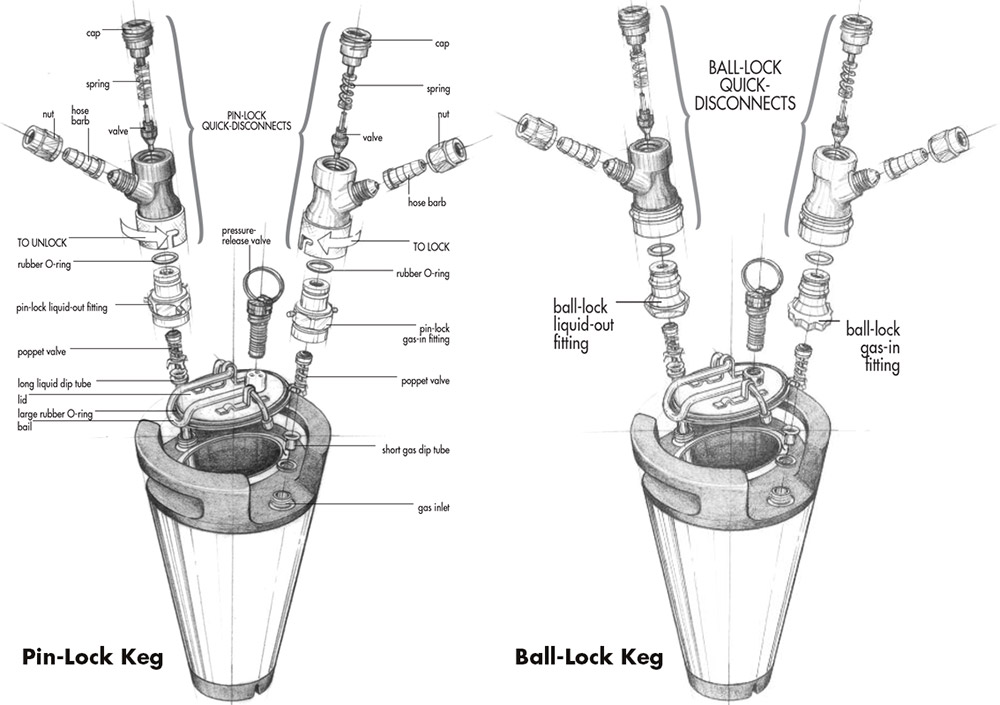
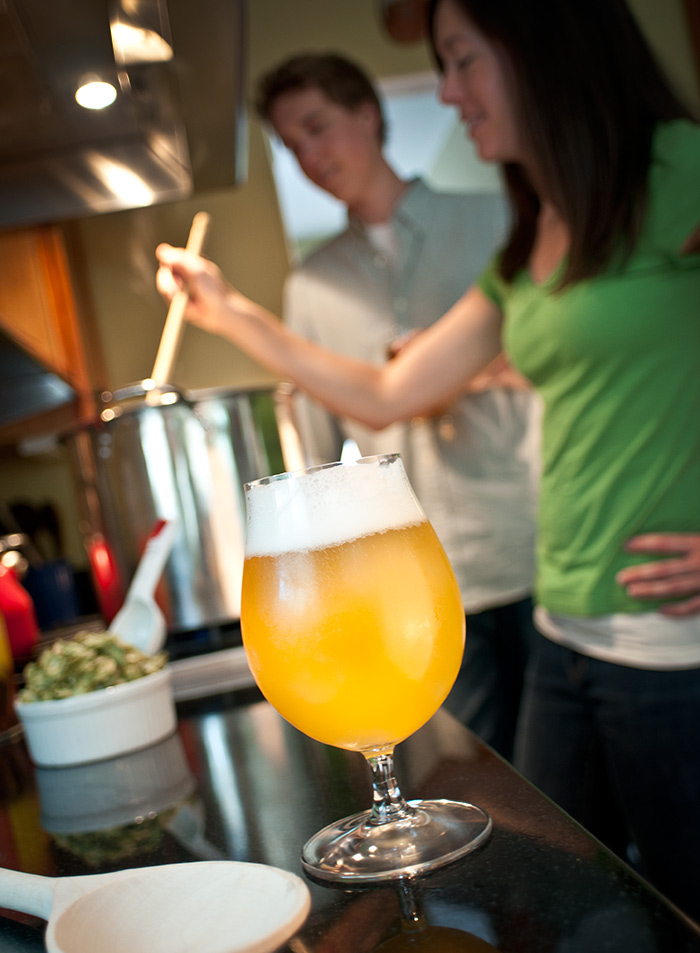 The importance of brewing with fresh ingredients cannot be overstated. The quality of homebrewed beer can only be as good as the quality of the ingredients going into the brew kettle.
The importance of brewing with fresh ingredients cannot be overstated. The quality of homebrewed beer can only be as good as the quality of the ingredients going into the brew kettle.


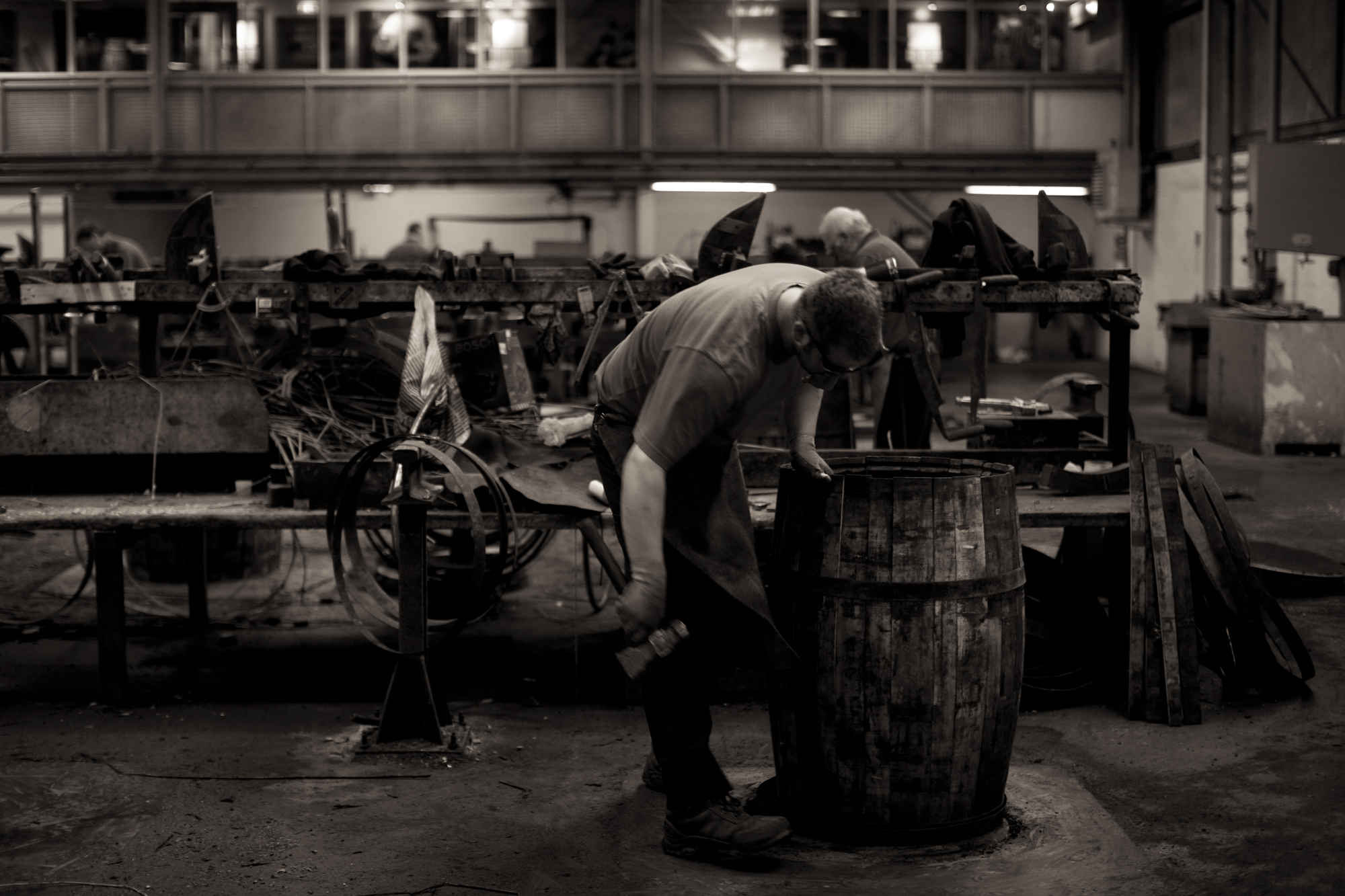





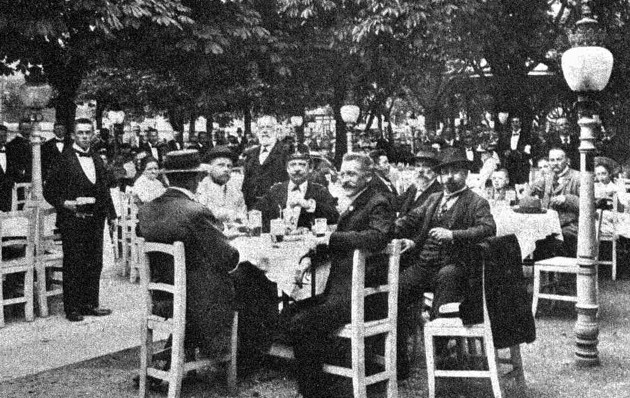
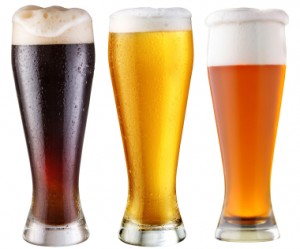
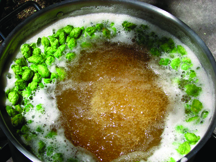
 Beer for breakfast? What was once a fun jest, now becomes reality — and we're not talking Funky Buddah's Maple Bacon Coffee Porter either — as beer jellies fill a growing market niche.
Beer for breakfast? What was once a fun jest, now becomes reality — and we're not talking Funky Buddah's Maple Bacon Coffee Porter either — as beer jellies fill a growing market niche.